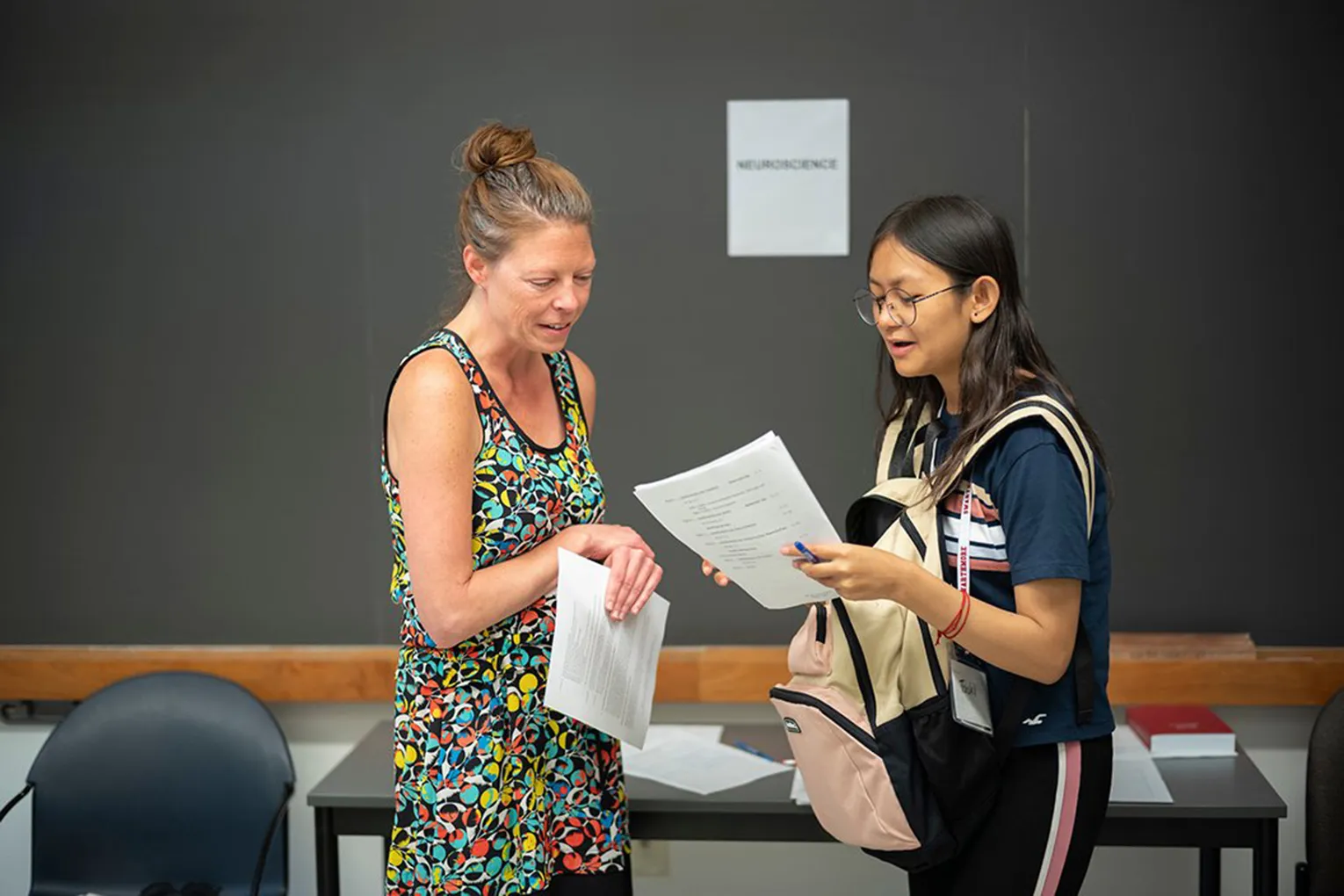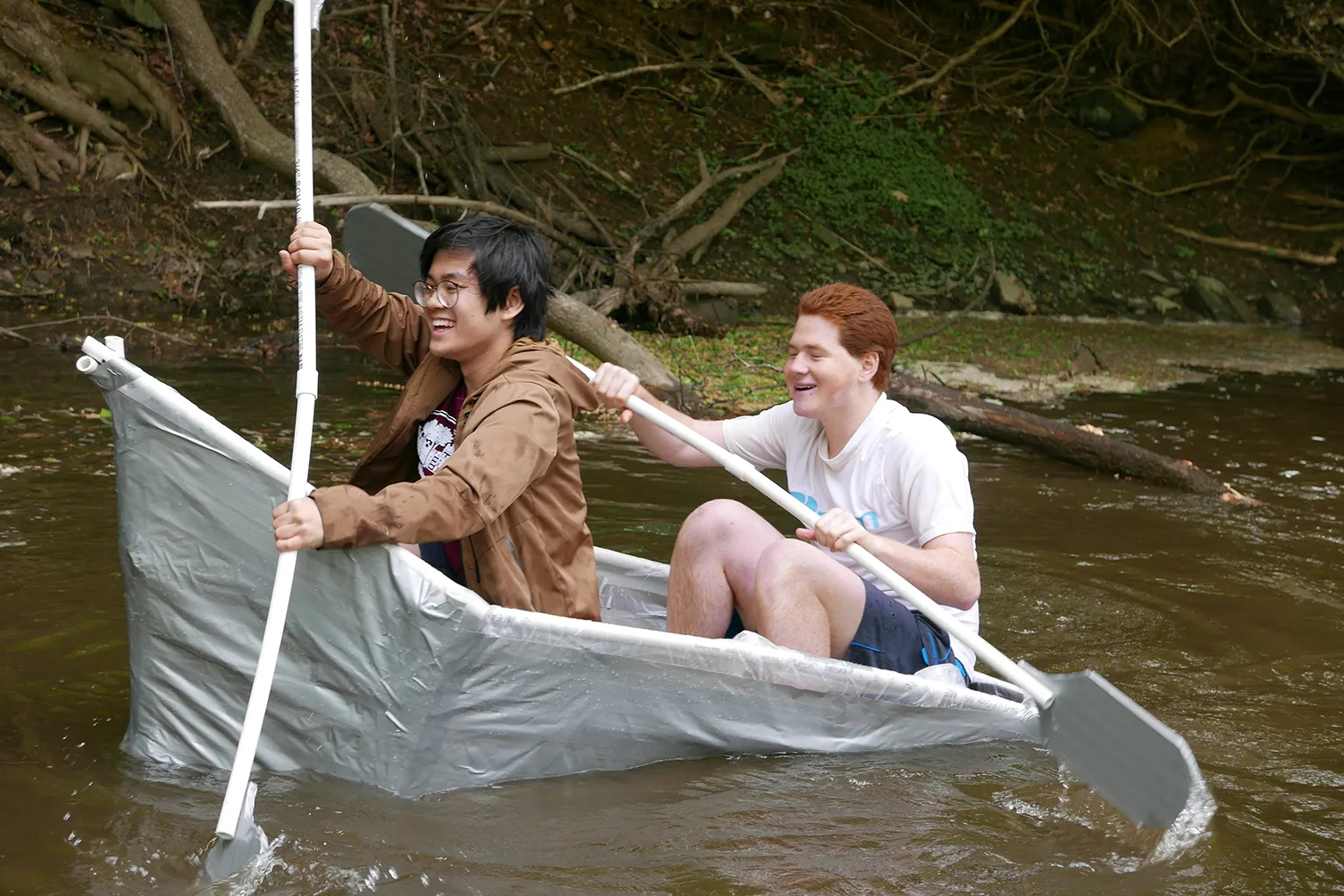Vince Formica
“One of the ways I do science is, I hand students a data set and give them some papers, and say, ‘What's interesting to you? Go answer that question.’”
“There’s this thing called the social environment,” he says. “It’s how other individuals are using space. Unlike the physical environment, the social environment is dynamic. It can evolve, too.”
That realization set him on a new course: understanding how the push and pull of social life itself evolves, and how that, in turn, shapes evolution.
“I think the big question is: How does complex social behavior evolve?” he says. “How does aggression, or an individual’s position in its social network, relate to the total structure of society?”
Many researchers tackle these questions theoretically. But Formica wanted empirical answers from the wild. To do that, he needed to find a species with social interactions that could be easily studied. Beetles fit the bill.
“We can go out in the woods, and the populations are all on a single log,” he says. “We can observe a thousand beetles in a single day. They can live for six years — so I’ve known some of these beetles for longer than some of my friends.”
He was also looking for a species that he could easily bring undergraduates to study.
“I knew I wanted to be at a liberal arts school,” says Formica, who joined Swarthmore in 2012.
His own experience of field research as an undergraduate at St. Mary’s College of Maryland was seminal.
“It was literally life changing for me,” says Formica. “Giving that opportunity to Swarthmore students drives what I do.”
Field biology still suffers from a lack of diversity, and Formica hopes to give his students, who hail from a wide range of backgrounds, an appreciation of the beauty and complexity of life in the wild — as well as their first introduction to life without creature comforts.
“Some students don’t even own a pair of hiking boots,” he says. “But they move to this remote field study on top of a mountain at 3,000 feet in Southern Virginia without cell signal. And then they’re out in the dark, braving the rattlesnakes and bears.”
Years of this grueling, but invariably entertaining, fieldwork have yielded valuable insights. To name but one: Years of close observation and data collection revealed a male beetle’s chances of reproductive success hinges not only on its own horn size, but also on the horn dimensions of its chosen male companions. Large-horned males frequently associate with smaller-horned individuals, boosting their chances of success.
The takeaway? Individual success is not just about individual traits. It’s also about how those traits interact with the surrounding community.
“We’ve discovered that the social environment is really important to the success of individuals in a population,” he says.
Formica also encourages members of the Beetle Crew to go off and chase answers to the questions that fascinate them.
“One of the ways I do science is, I hand students a data set and give them some papers, and say, ‘What's interesting to you? Go answer that question.’”
Thanks to these independent student projects, we now know that male beetles consistently prefer larger and more fecund females, and that beetles tend to have more offspring the older they get.
But despite decades in the field, Formica is still struck by the weight of what he doesn’t know.
“I’ve been doing this for 20 years,” he says. “I’d have imagined I knew everything I needed to know about this system. But there’s just more, there’s always more.”




